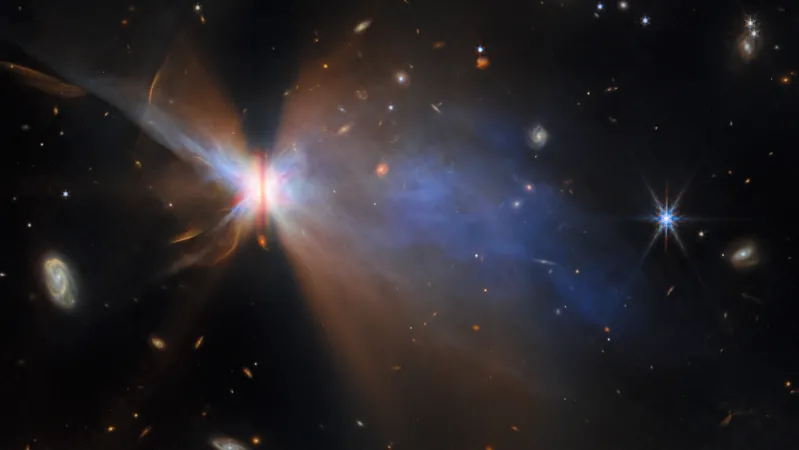
Stunning 'Butterfly Star' Unveiled: James Webb Telescope Reveals Cosmic Wonders!
2025-09-07
Author: Chun
Cosmic Marvels: The Butterfly Star and Its Protoplanetary Disk
A jaw-dropping new image from the James Webb Space Telescope has captured a breathtaking view of a star shrouded in a massive disk of gas and dust—an astronomical phenomenon known as a protoplanetary disk. This disk is where planets are born, and it's a spectacular sight to behold!
The star at the center of this celestial spectacle is IRAS 04302+2247, affectionately dubbed the "Butterfly Star" due to its unique shape visible from our vantage point on Earth. This captivating star system lies an astounding 525 light-years away in the Taurus Molecular Cloud, the nearest star-forming region to our solar system, brimming with molecular hydrogen and heavy elements from ancient supernovae.
Unlocking the Cosmic Secrets
Much of the material in this star-forming area is cloaked from the view of typical optical telescopes, but the James Webb telescope, with its advanced infrared capabilities, has unveiled the hidden details. The stunning image is a blend of optical data from the Hubble Space Telescope and fresh infrared information from Webb's Near Infrared Camera and Mid-Infrared Instrument (MIRI). This collaboration has helped reveal a dark, dusty lane dividing the nebula—an essential component of the star's protoplanetary disk.
This immense disk stretches about 40 billion miles across, numerous times larger than our solar system. Its substantial size indicates the incredible scale of processes that are occurring in the formation of new stars and planets.
Understanding Planetary Formation
The perspective from which astronomers study protoplanetary disks plays a crucial role in their observations. While face-on images can reveal intriguing details like rings and spirals—signs of planet formation—this edge-on view allows scientists to examine the thickness of the disk and the distribution of dust within it. Such insights are vital for understanding how planets accumulate mass over time, as dust is expected to settle toward the midplane, prime for clumping into planetesimals.
A recently published paper in The Astrophysical Journal highlights the dynamic nature of the Butterfly Star's nebula, revealing that its brightness varies, hinting at a potentially warped or misaligned inner disk. This groundbreaking discovery offers a tantalizing glimpse into the cosmic processes that may have shaped our very own solar system billions of years ago.
Join the Cosmic Adventure
As we continue to explore the universe, the James Webb Space Telescope pushes the boundaries of our knowledge, inching us closer to answering the age-old question: Are we alone in the universe? Stay tuned for more breathtaking discoveries and stunning visuals from our cosmic neighbor!


 Brasil (PT)
Brasil (PT)
 Canada (EN)
Canada (EN)
 Chile (ES)
Chile (ES)
 Česko (CS)
Česko (CS)
 대한민국 (KO)
대한민국 (KO)
 España (ES)
España (ES)
 France (FR)
France (FR)
 Hong Kong (EN)
Hong Kong (EN)
 Italia (IT)
Italia (IT)
 日本 (JA)
日本 (JA)
 Magyarország (HU)
Magyarország (HU)
 Norge (NO)
Norge (NO)
 Polska (PL)
Polska (PL)
 Schweiz (DE)
Schweiz (DE)
 Singapore (EN)
Singapore (EN)
 Sverige (SV)
Sverige (SV)
 Suomi (FI)
Suomi (FI)
 Türkiye (TR)
Türkiye (TR)
 الإمارات العربية المتحدة (AR)
الإمارات العربية المتحدة (AR)